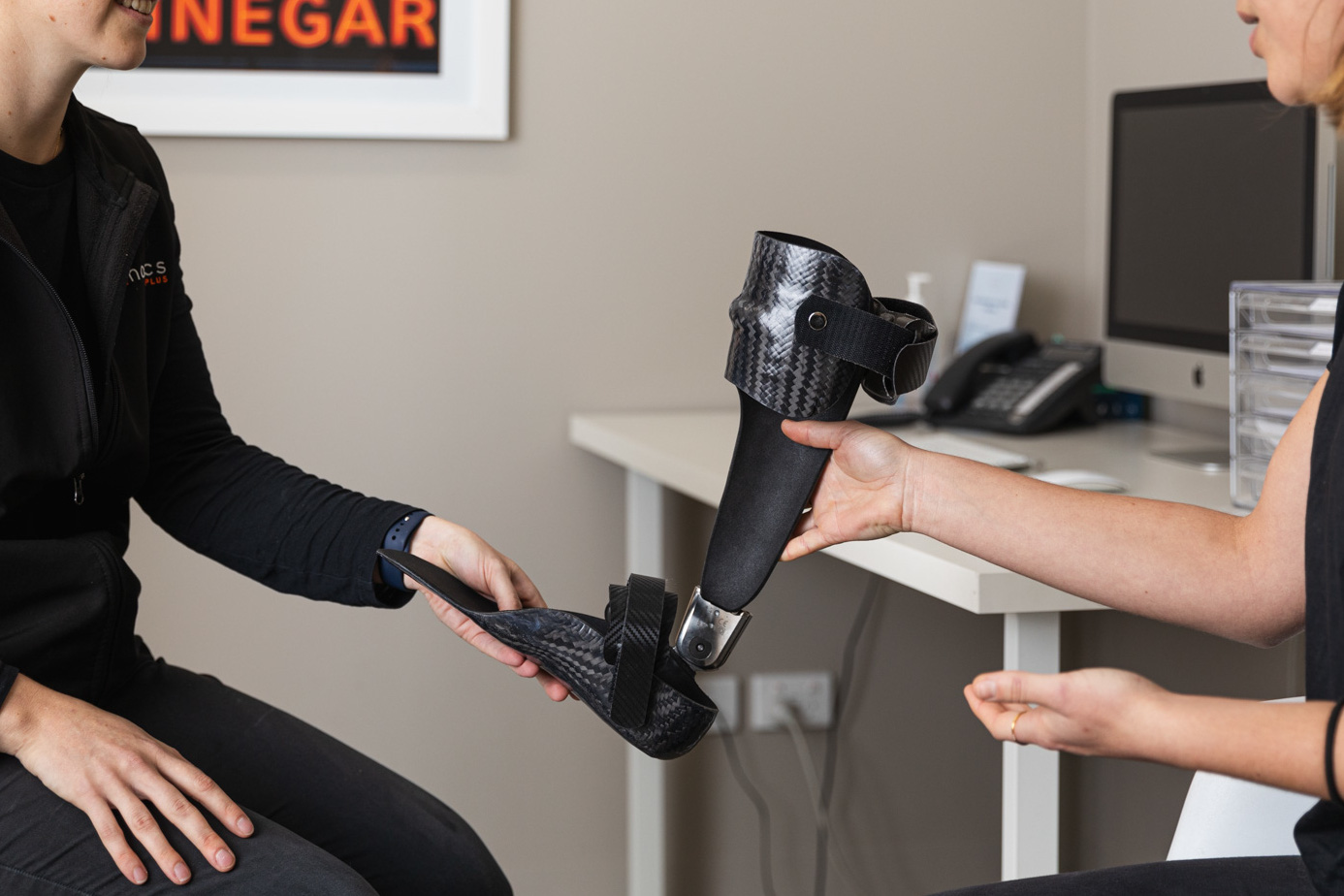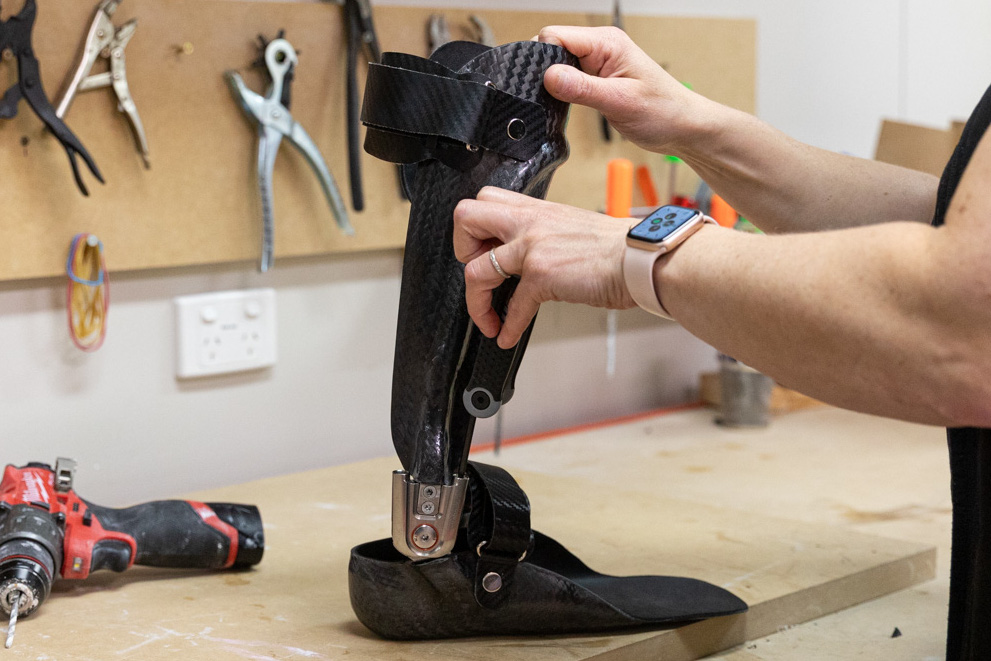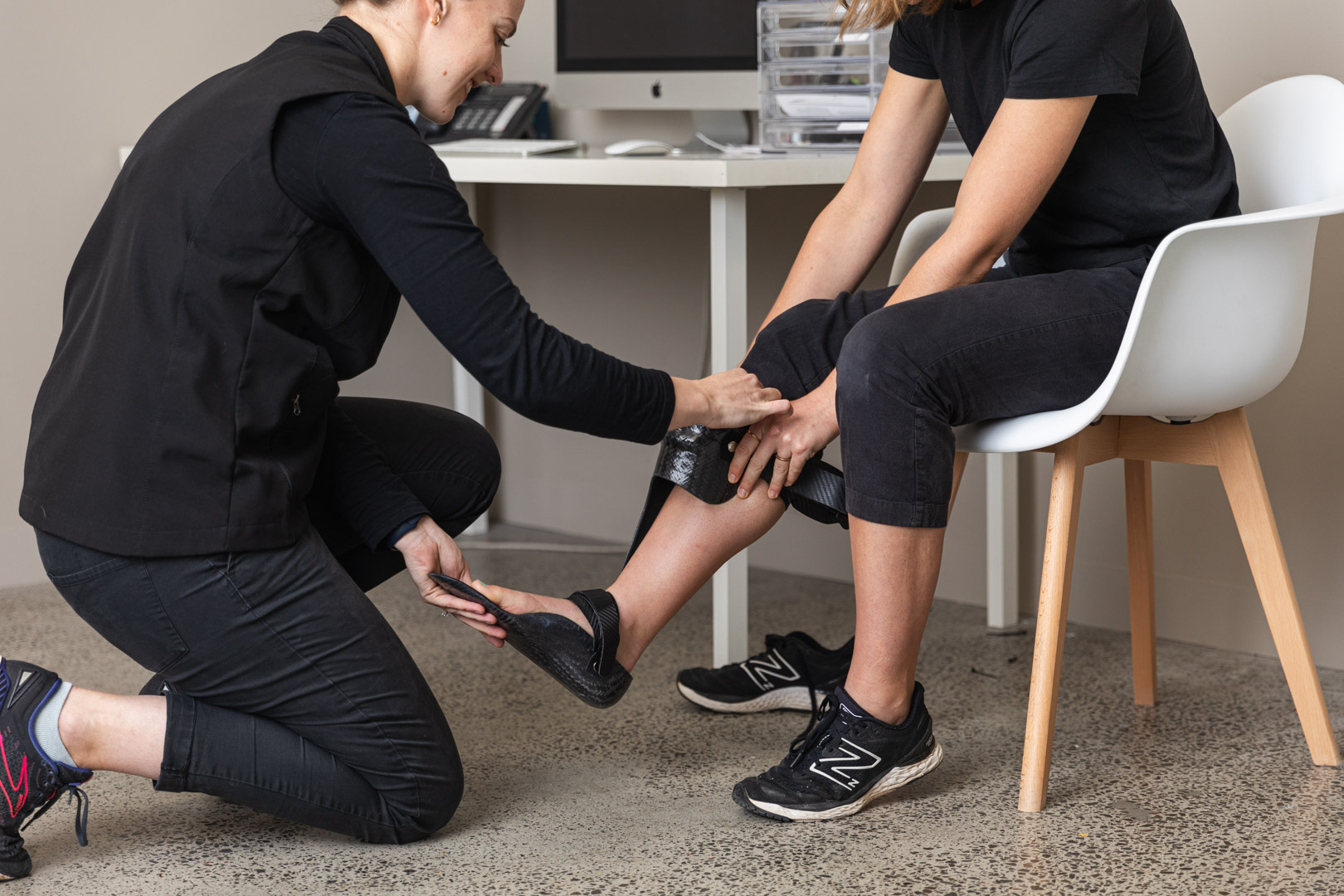AFOs for Stroke Patients
Ankle-Foot Orthoses (AFOs) can be very effective for stroke rehabilitation, offering improved mobility, stability, and quality of life for many people.
At Orthotics Plus, we understand that selecting the right AFO for stroke patients requires careful assessment and tailoring to individual needs.
AFO prescription is available at all of our Melbourne clinic locations.

When is an AFO Suitable for Stroke Patients?
Stroke patients often experience muscle weakness, instability, and challenges with toe clearance, making it difficult to maintain stability while walking. These issues are typically not manageable with standard shoes or orthotics.
Key Indicators for an AFO Prescription include:
- Lack of strength and stability around the ankle.
- Unstable walking pattern
- Weakness in specific muscle groups which are confirmed through physical assessment.
When these factors are present, an AFO becomes a possible solution to support mobility and improve walking efficiency.

Choosing the Right Sub-Type of AFO
The type of AFO prescribed depends on the patient’s specific needs, anatomy, and lifestyle. While cosmetic considerations are important, functionality and suitability take precedence. Below are the common types of AFOs and their applications:
| Type | Indications | Contraindications |
|---|---|---|
| Prefabricated AFOs | Suitable for stroke patients with dorsiflexor weakness and normal anatomy. Helps with toe clearance and improves gait stability. Lower cost initial option. | Not suitable for severe or complex scenarios. |
| Leaf Springs | Ideal for stroke patients needing assistance with toe clearance and dorsiflexion. Provides a flexible, lightweight option. | May not provide enough support for patients with severe tone issues or deformities. |
| Solid AFOs | Designed for stroke patients with significant muscle weakness, deformities, or tone issues. Provides enhanced stability and joint alignment. | Not ideal for patients with some ankle mobility or those requiring more dynamic movement. |
| Custom AFOs | Tailored for stroke patients with complex foot or ankle deformities. Offers high support and stability. | May be excessive for those with mild weakness. |
| Dynamic AFOs (i.e. NeuroSwing) | Suitable for stroke patients with foot drop, calf weakness, and other conditions like quadriceps weakness or spasticity. Variable resistance to plantar flexion and dorsiflexion, along with adjustable range of motion, allows for a more natural gait cycle. | Not recommended for patients with simple foot drop or those requiring less complex support. Requires a custom-built AFO due to the integration of the Neuro Swing mechanism, which is not compatible with prefabricated or standard AFO designs. |
Customisation and Adjustments for Stroke Supporting AFOs
Custom AFOs are tailored to the individual’s anatomy and functional requirements, minimising the need for further adjustments. However, prefabricated AFOs can be customised to improve comfort and performance. Common modifications include:
- Adjusting trim lines to accommodate the specific shape of the foot and leg, ensuring better fit and flexibility, especially for patients with varying degrees of muscle tone or spasticity.
- Adding padding to areas prone to pressure sores or discomfort is crucial for stroke patients who may have reduced sensation or altered skin integrity.
- Tuning– incorporating wedges to optimise the shank-to-vertical angle, helping improve dorsiflexion control and alignment during the swing phase of walking, which is often impaired in stroke patients.
For patients with complex needs, more rigid designs may be required to enhance ankle stability and improve both swing and stance phases of walking.

Expected Outcomes and Benefits
AFOs are designed to meet the mobility and rehabilitation pathway of stroke patients. While outcomes vary depending on the severity of the stroke and the patient’s goals, some common benefits include:
- Immediate Improvements: Many patients experience noticeable improvements in gait stability and walking efficiency on the day of fitting.
- Long-Term Gains: Regular use of an AFO, combined with physiotherapy, promotes neuroplasticity, allowing the brain to adapt and enhance motor control.
- Joint Preservation: By maintaining proper alignment, AFOs prevent long-term deformities and reduce pain.
- Increased Independence: Patients can walk longer distances, reduce their risk of falls, and engage in meaningful daily activities.
At our clinics, we have appropriate training rooms and facilities, so you can spend time trialling the AFO before making any decisions.

Timeline for Results
Patients often see immediate improvements in their walking ability, but the full benefits of an AFO develop over time with consistent use and physiotherapy. Significant progress is typically observed within a few months, as the patient adapts to the device and engages in regular gait training.
Stroke patients may also experience varying levels of sensation and muscle spasticity. An AFO must be designed to accommodate these factors, ensuring comfort and functionality without exacerbating symptoms. Proper training and ongoing gait analysis are essential to maximise the benefits of the device.
At Orthotics Plus, we aim to provide stroke patients with the tools they need to achieve greater independence and improve their quality of life. If you or a loved one is considering an AFO, our team is here to help with personalised assessments and expert guidance.

Contact Orthotics Plus
At Orthotics Plus, we are dedicated to providing the most compelling and effective solutions for our patients.
- We stock a range of AFOs, with fully customizable materials and technology
- We advocate for your choice and control
- We recommend a ‘just enough approach’
- We are NDIS registered and can support your funding request
Contact us today to schedule a consultation to learn how an AFO can improve your mobility and quality of life.
